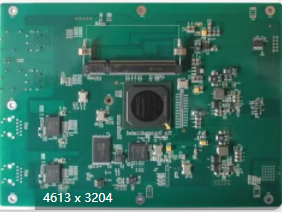PCB aluminum substrate has many names, aluminum cladding, aluminum PCB, metal clad printed circuit board (MCPCB), thermally conductive PCB, etc. The advantage of PCB aluminum substrate is that the heat dissipation is significantly better than the standard FR-4 structure, and the dielectric used is usually It is 5 to 10 times the thermal conductivity of conventional epoxy glass, and the heat transfer index of one-tenth of the thickness is more efficient than traditional rigid PCB. Let's understand the types of PCB aluminum substrates.
One, flexible aluminum substrate
One of the latest developments in IMS materials is flexible dielectrics. These materials can provide excellent electrical insulation, flexibility and thermal conductivity. When applied to flexible aluminum materials such as 5754 or similar, products can be formed to achieve various shapes and angles, which can eliminate expensive fixing devices, cables and connectors. Although these materials are flexible, they are designed to bend in place and remain in place.
Two, mixed aluminum aluminum substrate

In the "hybrid" IMS structure, the "sub-components" of non-thermal substances are processed independently, and then Amitron Hybrid IMS PCBs are bonded to the aluminum substrate with thermal materials. The most common structure is a 2-layer or 4-layer subassembly made of traditional FR-4, which can be bonded to an aluminum substrate with a thermoelectric to help dissipate heat, increase rigidity, and act as a shield. Other benefits include:
1. The cost is lower than the construction of all heat-conducting materials.
2. Provide better thermal performance than standard FR-4 products.
3. It can eliminate expensive radiators and related assembly steps.
4. It can be used in RF applications that require the RF loss characteristics of the PTFE surface layer.
5. The use of component windows in aluminum to accommodate through-hole components allows connectors and cables to pass the connector through the substrate while welding rounded corners to create a seal without the need for special gaskets or other expensive adapters.
Three, multilayer aluminum substrate
In the high-performance power supply market, multi-layer IMS PCBs are made of multi-layer thermally conductive dielectrics. These structures have one or more layers of circuits buried in the dielectric, and blind vias are used as thermal vias or signal paths. Although single-layer designs are more expensive and less efficient to transfer heat, they provide a simple and effective cooling solution for more complex designs.
Four, through-hole aluminum substrate
In the most complex structure, a layer of aluminum can form the "core" of the multilayer thermal structure. Before lamination, aluminum is electroplated and filled with dielectric in advance. Thermal materials or sub-components can be laminated to both sides of the aluminum using thermal adhesive materials. Once laminated, the finished assembly resembles a traditional multilayer aluminum substrate by drilling. Plated through holes pass through gaps in the aluminum to maintain electrical insulation. Alternatively, the copper core may allow direct electrical connection as well as insulating vias.